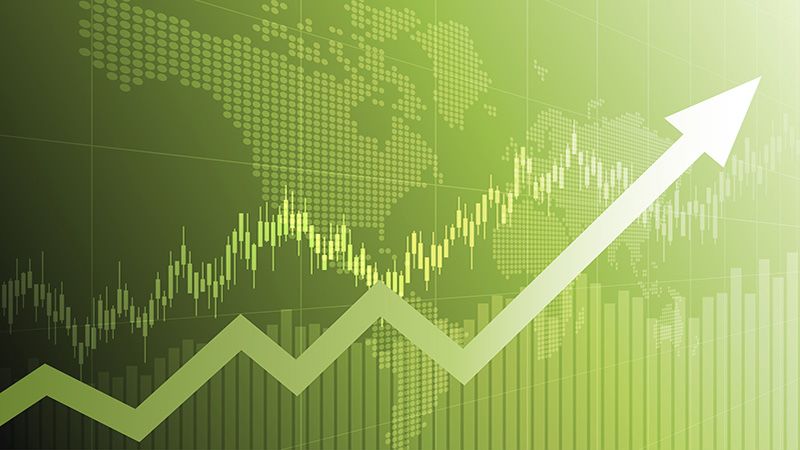The global green economy has reached a total value of $7.9trn, accounting for 8.6% of global listed equities in the first quarter of 2025, while the green bond market saw record new issuance of $572bn in 2024 – a 10% per annum increase – according to research by the London Stock Exchange Group (LSEG).
That was despite short-term performance remaining turbulent amid geopolitical tensions, shifting trade policies and rapid technological change, including advances in artificial intelligence.
As measured by the FTSE Environmental Opportunities All Share Index, green equities started 2024 underperforming their benchmark, the FTSE Global All Cap Index. However, they recovered in the second half to close the year in line with the market. Year-to-date, they have underperformed the market by 3% in challenging market conditions. In terms of revenues, the sector exceeded $5.1trn in 2024, growing at a CAGR of 8% over the past decade.
Additionally, while the Americas lead in market cap, Asia generated the largest share of global green revenue (44%). In fact, the green economy in emerging markets is growing at nearly twice the rate of developed ones.
The findings of LSEG’s 6th annual Green Economy report underscore its “long-term resilience”, highlighting that, despite global uncertainty, the transition to a low-carbon economy continues to support long-term growth. If treated as a standalone sector, for example, the green economy would rank as the fourth-largest by market capitalisation, trailing only technology, industrial goods & services and healthcare. With a 10-year compound annual growth rate (CAGR) of 15%, it is second only to technology.
James Alexander, chief executive of UKSIF, said LSEG’s research “clearly demonstrates the strong economic case for moving at pace towards net zero”.
“A recent report from the Confederation of British Industry showed that the UK’s net zero economy is growing three times faster than the economy overall. As a consequence, it is creating jobs on higher-than-average salaries, and is of course helping reduce our emissions, limit the effects of climate change, enhancing energy security and lowering energy bills.
“In tandem, these reports highlight the incredible opportunity for the UK to lead the world in growing the economy of the future, attracting billions in private capital from investors around the world who are eager to invest in the green transition.”
Key investment themes
The report also explores key investment trends and themes.
The green economy spans 50 markets and nearly all industries. Almost a third of industries have a green exposure greater than 10%, led by autos, utilities, construction and materials, and real estate. Notably, 53% of market capitalisation in the autos sector now comes from green activities.
As physical climate risks intensify – evident in recent wildfires in Los Angeles and flooding in Spain – adaptation and resilience are becoming more prominent themes, with 34% of large- and mid-cap listed companies referencing adaptation measures in their annual disclosure. This may be because corporate losses from physical climate impacts have already reached $4.3trn, and could rise to as high as 14% of global GDP by 2050.
Meanwhile, energy transition continues to be the primary engine of growth. The energy management & efficiency sector – spanning solutions from green buildings to high-efficiency chips – comprises 46% of the green economy and is the best-performing segment. Efficiency solutions are becoming increasingly important to address the accelerated energy demand heightened by data centres and physical climate change risks, the report highlighted.
Transport equipment, led by electric vehicles (EVs) and battery manufacturers including Tesla and several Asian automakers, follows at 17%.








